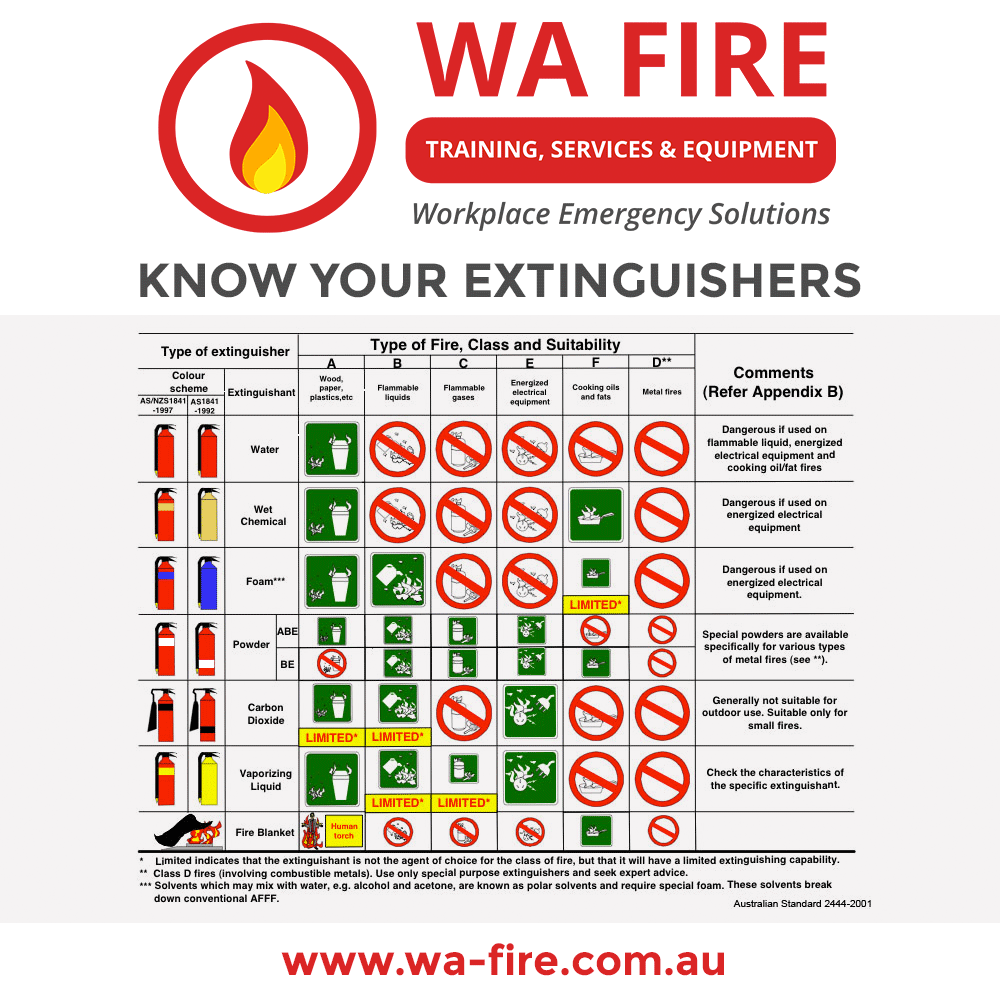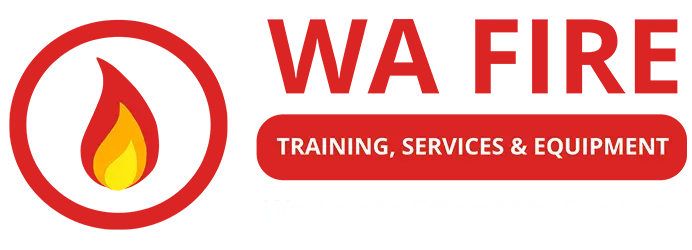Are you familiar with all Fire Extinguisher Types?
Do you know which fire extinguisher types to use in an emergency situation? Are you familiar with fire extinguisher types colour coding? Have you ever been briefed on the Fire Extinguisher Chart Australian Standard?
WA Fire provide expert fire extinguisher training Perth companies turn to when training their fire wardens and general staff.
Make sure your staff are ready all year round, with fire extinguisher training that is informs, prepares and engages your employees.
Your business will benefit from AS/NZS1841-1997 and AS1841-1992 standards compliant training from emergency services professionals.
Contact us today to empower your staff on choosing the correct fire extinguisher types.
Fire Extinguisher Chart Australian Standard

* Limited indicates that the extinguishant is not the agent of choice for the class of fire, but that it will have a limited extinguishing capability.
** Read up on Class D fires below.
*** Solvents which may mix with water, e.g. alcohol and acetone, are known as polar solvents and require special foam. These solvents break down AFFF (aqueous film-foaming foam).
Our fire extinguisher training will guide you on fire extinguisher types, extinguishants properties and the type of fire they apply to.
What are the main fire extinguisher types?
- Water
- Dangerous if used on flammable liquid, energised electrical equipment and cooking oil / fat fires
- Wet Chemical
- Dangerous if used on electrical equipment
- Foam
- Dangerous if used on energised electrical equipment
- Powder ABE & BE
- Special powders are available specifically for various types of metal fires
- Check out the Class D fire guidance below
- Carbon Dioxide
- Generally not suitable for outdoor use
- Suitable only for small fires
- Vaporising Liquid
- Check the characteristics of the specific extinguishant
- and also Fire Blanket
- Used for human torch scenarios
- Can be used for cooking oils and fat fires
What are fire types and classes?
- Class A: Wood, paper, plastics, etc.
- Class B: Flammable liquids
- Class C: Flammable gases
- Class E: Energised electrical equipment
- Class F: Cooking oils and fats
- Class D: Metal fires
How do I extinguish a metal fire?
Class D fires that involve combustible metals should only be extinguished with special purpose extinguishers.
Seek expert advice, contact us today for guidance.
Fire extinguisher sales, installation and servicing
Our knowledge of fire equipment also enables us to supply, install, service, maintain, sell and even hire out fire safety products.
Installation and servicing is performed in accordance with Australian Standards by qualified technicians.
For further information on these services, contact us today.
